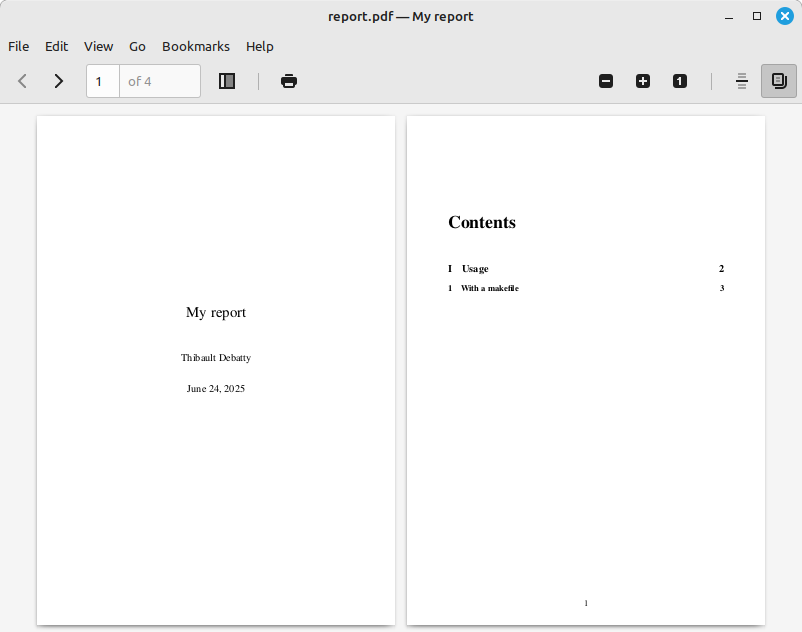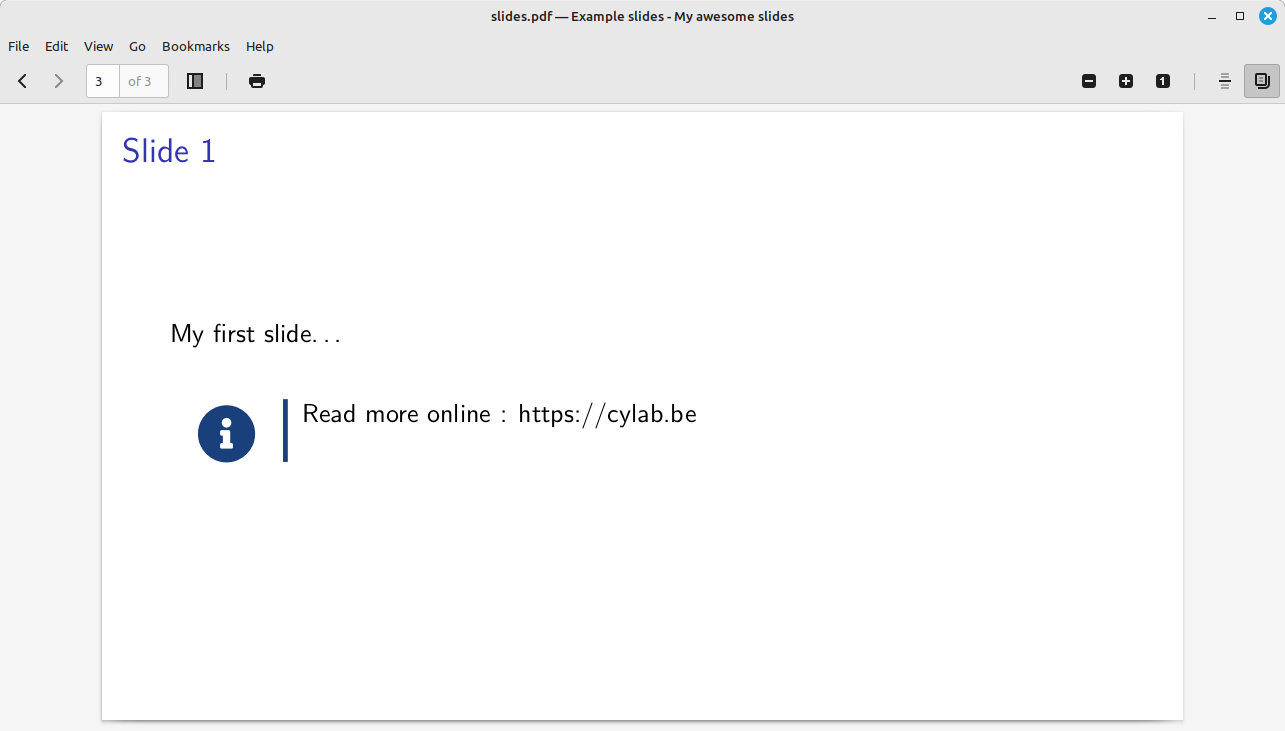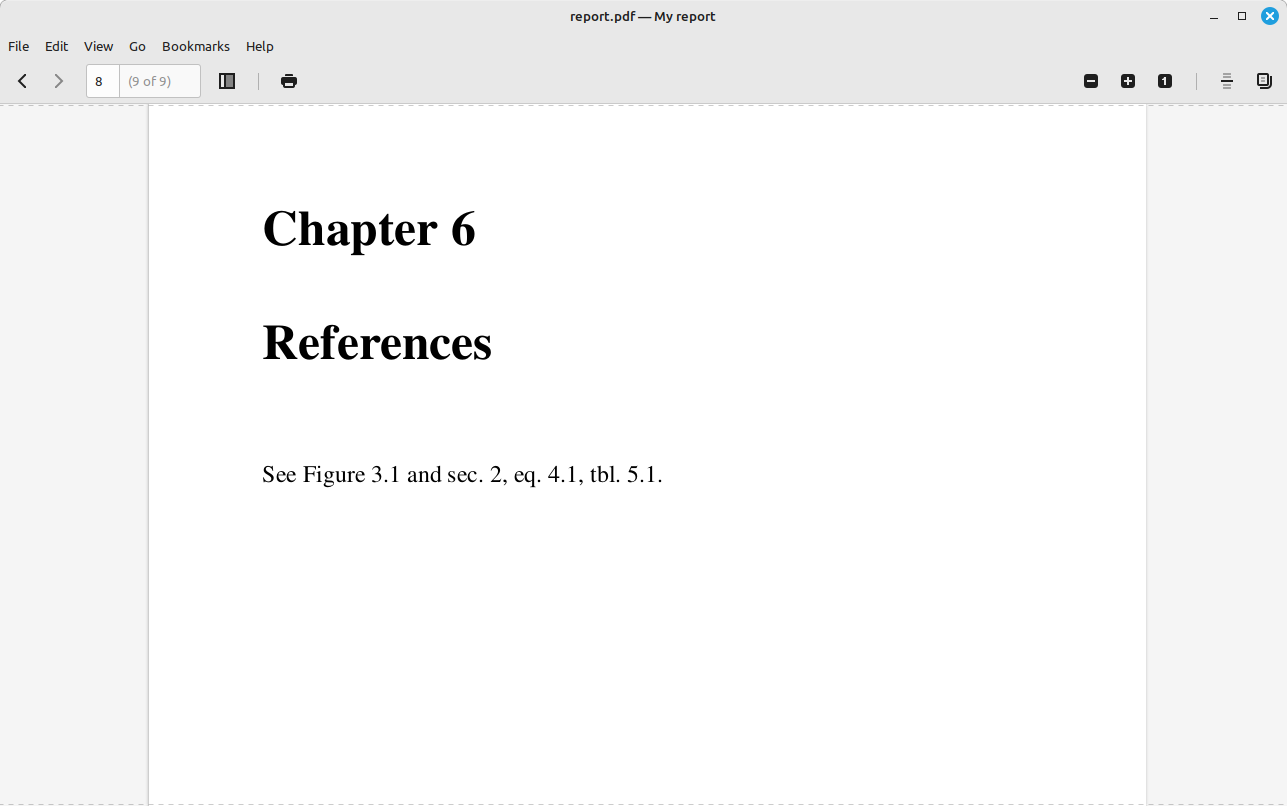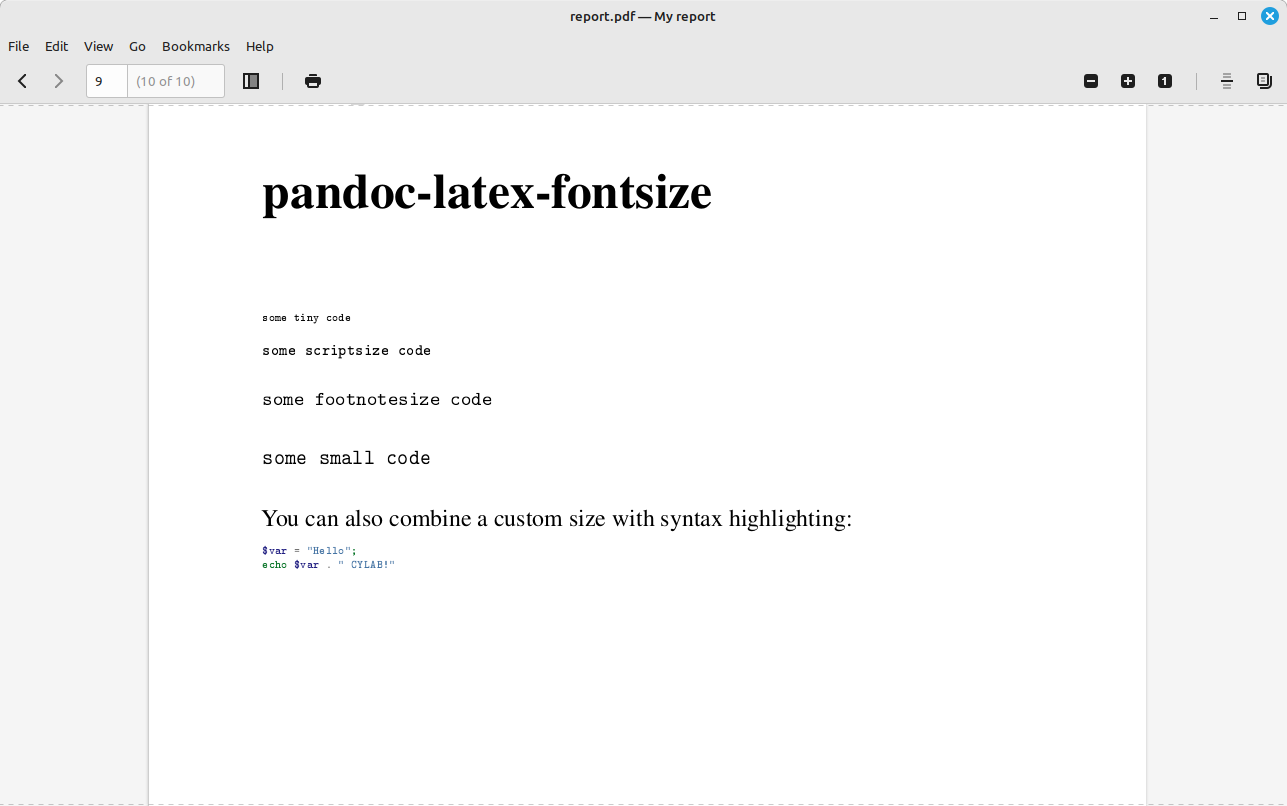Create slides and reports with pandoc and Docker
Jun 24, 2025 by Thibault Debatty | 289 views
https://cylab.be/blog/424/create-slides-and-reports-with-pandoc-and-docker
Pandoc is a free and open-source document converter that can convert various markup languages into different formats. It supports conversion from and to formats such as Markdown, reStructuredText, LaTeX, HTML, Word docx, and more. It is an incredibly powerful tool, which we use extensively to create PDF slides or reports from easy to maintain markdown sources. Pandoc is also highly customizable through the use of templates and filters.
Under the hood, pandoc uses LaTex to produce PDF outputs. So the installation may be a little tricky as it requires to install LaTex, pandoc itself plus filters with matching versions. To make processing easier, we use a custom docker image that contains pandoc, LaTex and filters. Here is how to use this Docker image to produce slides and reports.
The Docker image
cylab/pandoc is a custom Docker image that contains pandoc (obviously) plus some useful filters (extensions):
-
pandoc-includeallows to split the source between multiple files; -
pandoc-crossrefallows to create cross-references in the document; -
pandoc-latex-fontsizeallows to modify the size of some elements; -
pandoc-latex-environmentallows to create code blocks.
The image also includes a few additional tools:
-
watchandmake -
pdftkcan be used to merge or modify the produced PDF; -
plantumlallows to create UML graphs.
Here is how to use the image to produce reports and slides…
Report
Here is a very simple report.md file that can be used to write a report:
---
title: My report
author: Thibault Debatty
date: \today
documentclass: report
bibliography: bibliography.bib
geometry:
- margin=2cm
- b5paper
fontfamily: mathptmx
fontsize: 12pt
toc: true
codeBlockCaptions: True
pandoc-latex-fontsize:
- classes: [tiny]
size: tiny
- classes: [scriptsize]
size: scriptsize
- classes: [footnotesize]
size: footnotesize
- classes: [small]
size: small
pandoc-latex-environment:
noteblock: [note]
tipblock: [tip]
warningblock: [warning]
cautionblock: [caution]
importantblock: [important]
header-includes:
- \usepackage{awesomebox}
---
# Usage
## With a makefile
You can compile this to a PDF with the following command:
docker run --rm -v ${PWD}:/work -w /work \
-u $(id -u ${USER}):$(id -g ${USER}) cylab/pandoc \
pandoc --number-sections -t latex --top-level-division part --toc-depth 2 \
-F pandoc-include -F pandoc-crossref -F pandoc-latex-fontsize -F pandoc-latex-environment \
--citeproc --fail-if-warnings \
-o report.pdf report.md
As this is obviously a long command line, it is usually easier to create a Makefile
#
# Use docker image cylab/docker to create a PDF report
# https://cylab.be/blog/424/create-slides-and-reports-with-pandoc-and-docker
#
default: docker
docker:
docker run --rm -v ${PWD}:/work -w /work -u $(id -u ${USER}):$(id -g ${USER}) cylab/pandoc make report.pdf
report.pdf: report.md
pandoc --number-sections -t latex --top-level-division part --toc-depth 2 -F pandoc-include -F pandoc-crossref -F pandoc-latex-fontsize -F pandoc-latex-environment --citeproc --fail-if-warnings -o report.pdf report.md
Which means you can now compile your report with a simple
make
Slides
Likewise, pandoc and the pandoc image can be used to create slides. Here is an example slides.md
---
title: "Example slides"
subtitle: My awesome slides
author: Thibault Debatty
date: \today
toc: true
pandoc-latex-fontsize:
- classes: [tiny]
size: tiny
- classes: [scriptsize]
size: scriptsize
- classes: [footnotesize]
size: footnotesize
- classes: [small]
size: small
pandoc-latex-environment:
noteblock: [note]
tipblock: [tip]
warningblock: [warning]
cautionblock: [caution]
importantblock: [important]
header-includes:
- \usepackage{awesomebox}
---
# Introduction
## Slide 1
My first slide...
Which you can compile with:
docker run --rm -v ${PWD}:/work -w /work \
-u ${UID}:${GID} cylab/pandoc pandoc \
--slide-level 2 -f markdown -t beamer --fail-if-warnings \
-V classoption:aspectratio=169 \
--filter pandoc-include --filter pandoc-crossref --filter pandoc-latex-environment \
--filter pandoc-latex-fontsize \
-o slides.pdf slides.md
Similarly, you can create a Makefile to help you:
#
# Use docker image cylab/docker to create PDF slides
# https://cylab.be/blog/424/create-slides-and-reports-with-pandoc-and-docker
#
default: docker
docker:
docker run --rm -v ${PWD}:/work -w /work -u $(id -u ${USER}):$(id -g ${USER}) cylab/pandoc make slides.pdf
slides.pdf: slides.md
pandoc --slide-level 2 -f markdown -t beamer --fail-if-warnings -V classoption:aspectratio=169 --filter pandoc-include --filter pandoc-crossref --filter pandoc-latex-environment --filter pandoc-latex-fontsize -o slides.pdf slides.md
Filters
As mentioned, the Docker image also has some pre-installed pandoc filters. Here is a quick reference on how to use them…
pandoc-include
pandoc-include allows to split the content of your document in multiple file. You can then include a file with
!include section-01.md
https://github.com/DCsunset/pandoc-include
pandoc-latex-environment
pandoc-latex-environment allows to create LaTeX environement blocks. This allows to add attention blocks in the document.
For example, the following code:
## Slide 1
My first slide...
::: note
Read more online : [https://cylab.be](https://cylab.be)
:::
Will be rendered as
By default the following environment are defined, but you can create others:
-
note -
tip -
warning -
caution -
important
https://github.com/chdemko/pandoc-latex-environment
pandoc-crossref
pandoc-crossref allows to attach labels to figures, equations, tables or sections, and cite them from somewhere else in the document:
## Docker {#sec:docker}
## Image
{#fig:image-01}
## Equation
$$ math $$ {#eq:equation-01}
## Table
a b c
--- --- ---
1 2 3
4 5 6
: Caption {#tbl:table-01}
## References
See @fig:image-01 and [@sec:docker; @eq:equation-01; @tbl:table-01].
https://github.com/lierdakil/pandoc-crossref
pandoc-latex-fontsize
pandoc-latex-fontsize allows to modify the size of some elements. This can be useful for code blocks for example.
```tiny
some tiny code
``
```scriptsize
some scriptsize code
``
```footnotesize
some footnotesize code
``
```small
some small code
``
You can also combine a custom size with syntax highlighting using the following syntax:
``` {.php .scriptsize}
$var = "Hello";
echo $var . " CYLAB!"
``
https://github.com/chdemko/pandoc-latex-fontsize
This blog post is licensed under
CC BY-SA 4.0







